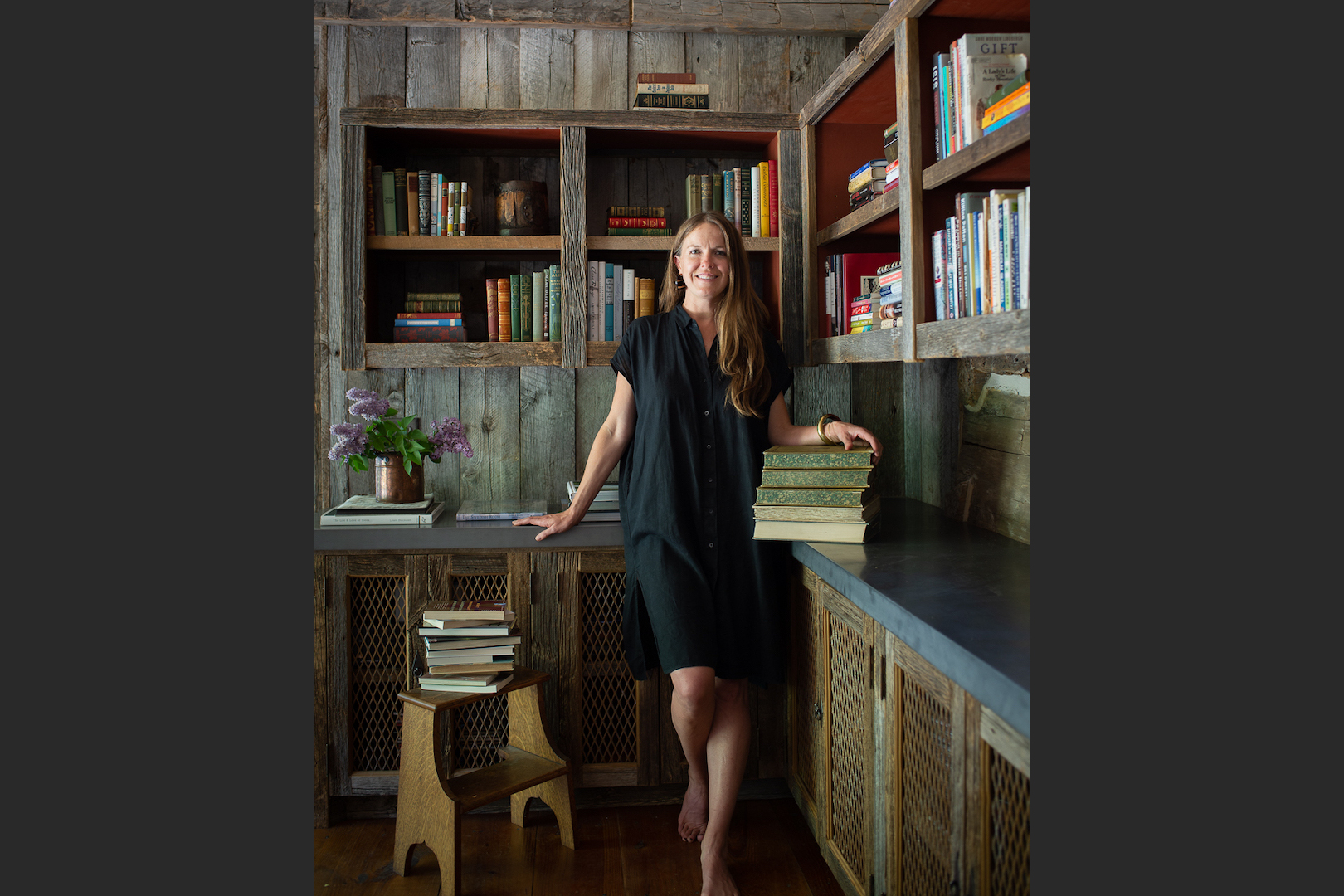Forget sizing people up by their clothes, cars or careers. You want to know someone? Look at their books. What people choose to fill their minds and souls with tells you all you need to know.
“The books on your shelves say who you are,” says private librarian Christy Shannon Smirl, of Wilson, Wyo. “They speak to your aesthetic, taste, intellect and interests.”
The books, however, tell only part of the story. How they’re displayed tells the rest. That’s where Smirl, who has a master’s degree in library science and an eye for design, comes in. Smirl started Foxtail Books & Library Services five years ago to help book lovers curate, organize and arrange their home libraries.
As someone who loves books and home design, I can’t believe this job actually exists. Browsing through photos of home libraries on the Foxtail website makes me want to curl up inside them and read for the rest of my life.
 If books are the window into your mind, how they’re arranged is a window into your style, says private librarian Christy Shannon Smirl, owner of Foxtail Books & Library Service. (Courtesy of Lisa Flood)
If books are the window into your mind, how they’re arranged is a window into your style, says private librarian Christy Shannon Smirl, owner of Foxtail Books & Library Service. (Courtesy of Lisa Flood)
But for the moment, and while I have Smirl on the phone, I had some burning book questions:
Marni: How did you get into this business? (She asks jealously.)
Christy: After working as a librarian for public and academic libraries for a dozen years, I noticed that many homes in my area needed the same services. Residents here are highly educated and well-traveled. They have beautiful homes and fabulous book collections. No one was doing this.
Marni: How is working as a private librarian different?
Christy: I do the same work I used to do — curate, organize, research and determine how to best arrange shelves — except instead of working with 100,000 books, I work with 1,000 or 500 or 200. I like the combination of making someone’s personal library a place they can use and find great joy in, while also making the books look great.
Marni: So where do you start?
Christy: When I meet with clients, we talk about what subjects are important to them, and how they use their books. This helps determine what books rise to the top and deserve better real estate, say eye level. Then we work on organizing books by category, and making sure they are in the right room or right place, cookbooks in the kitchen, for example. Certain subjects might be close to the front of the house on the coffee table, others in the office or family room. Maybe in the guest room, you have books about the area.
Marni: What are some of your favorite ways to display books?
Christy: Look beyond shelves for any flat surface — a foot stool, a bar cart, a nightstand — and stack them up.
Marni: Do you prefer to fill the whole bookcase with books or leave some open space?
Christy: Some clients have a full wall of books, and it looks great. However, when shelves are only half full, you have more display options. You can orient books from left to right, or right to left. You can turn books on their sides. You can complement the collection with accessories.
Marni: OK, let’s get controversial. Do you organize alphabetically by author, or by color, or by height?
Christy: My job is to give options, though I can tell you what you should do. I organize fiction by author almost always. In cases where we categorize books by a topic that fills one shelf or less, organizing by height can give a sense of order. Highly visual people often organize books by color, which really pushes some readers’ buttons.
Marni: Because not all books are display worthy, like, say, old paperbacks, which ones go behind closed doors?
Christy: I display a mix of hardcovers and soft covers in good condition. Don’t hide a book because it’s well loved. A tattered book can be beautiful. Textbooks or manuals don’t have to be out.
Marni: Book lovers can easily acquire too much of a good thing. What do we have your permission to get rid of?
Christy: Although I do love a house full of teetering piles of books in every corner, I also believe it’s important to get rid of books that aren’t serving you. Certainly, old travel guides can go. They get outdated quickly. Look to donate cookbooks or exercise books bought during some trendy phase, and books related to former career interests or stages of life.
Marni: What’s the best way to care for books?
Christy: Don’t leave them lying open, that will eventually break their spine. Keep them away from light, especially direct sunlight, and water. If a book gets wet, it can develop mold, which can spread. Don’t wipe books or shelves with a damp rag or furniture polish. Use a dry duster.
Marni: What do you wish more people knew?
Christy: Despite the many strong opinions out there, what matters is that people enjoy their books, whatever that means to them. A life full of books is a good life.
Marni Jameson is the author of six home and lifestyle books, including “What to Do With Everything You Own to Leave the Legacy You Want.”
